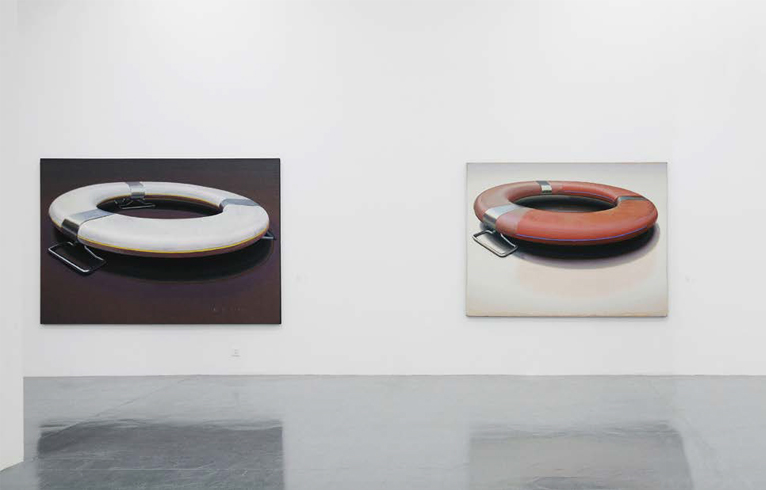ZHANG HUI: GROUNDLESS
| October 16, 2012 | Post In LEAP 16

Seen at the studio or displayed inside a gallery, Zhang Hui’s works always possess the quality of connectivity; each artwork is a branch rooted in and growing from others. A section from one painting becomes the central image for another canvas; one square of color could determine the palette for the next work. These root-and-branch relationships do not have a center or set points of departure. Instead, the associations between works could easily change the next time they are exhibited together, rearranging the seemingly stable order. In the exhibition “Groundless” the apparently clear structures between the paintings could, in Zhang’s mind, reorganize and grow anew at any time.
To emphasize this root-and-branch relationship is to accurately describe Zhang Hui’s working method. Unlike the majority of contemporary artists in China, he does not purposefully produce works in series, or make multiple editions. Sometimes, before finishing a painting, Zhang does not know what is to come next. He could re-paint the same work, or even jump ahead to a different image.
Here at Long March Space, Zhang Hui nevertheless has dutifully separated the works into various groups, embedding in each a developing theme as reference. The “Listening” series features a painting of a relief sculpture of a face, a portrait painted in the style of a plaster sculpture, and similarly, a plaster ear. In the “Neon” series, the images move from the ripples and reflections of a puddle to twisting neon light tubes that in the next canvas merge into a woven object. Stepping beyond this imagery, one sees the evolutionary relationship of visual forms between these works. For example, the leap between the painting of the plaster portrait and ear is made from a trace of color. Such traces appear in nearly every work on view, making each painting’s reappearance in the next canvas difficult to ignore. Similar to how an object reveals its true form when parts of its surface have eroded or dissolved, through these traces painting shows itself to be an illusory construct, because in reality it is just layer upon layer of paint. If we look closely, evidence of this “reappearing” stratum is everywhere on Zhang’s canvases, which are like the sites of a geological investigation, each a display of how a painting forms.
It is worth noting that as of late Zhang Hui has begun all of his works on a black surface. It is to “make myself understand that I’m working on an existing, non-empty foundation,” he says. When a canvas is not empty, instead perceived as an open space, a clearing— unlike emptiness, open space itself exists as matter— painting obtains the premise upon which to be trustworthy. Of course, this preexisting foundation is the visual framework that we have placed ourselves into, a contemporary art system built upon the principles of aesthetic correctness— of which political correctness is only a small part— and our methods and tastes of seeing are unconsciously determined and influenced by it. Against this backdrop, Zhang gradually peels away the layers like the skin of an onion, revealing the constructive nature of seeing, the quintessence of which is nothingness.
In this sense, “Groundless” shows us, without resorting to didacticism, that there is no ironclad truth, nor that inflexible thing called “painting.” Everything is a process of formation and disappearance, the intellectual perception of which must be based on experiential understanding of that open space of a canvas. Only when there is sufficient experience can the profound comprehension of nothingness follow.
Bao Dong (Translated by JiaJing Liu)

